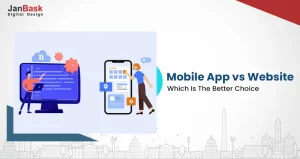
Picture this: a group of friends sitting in a coffee shop, brainstorming ideas for their startup app. They want to create something innovative and useful, something that people will actually use on a daily basis. They throw around ideas for a few hours until they finally settle on one – a mobile application that helps people find and book fitness classes in their area. It seems like a great idea, but they know that building a successful mobile app is no easy feat.
If you're reading this, you may be in a similar situation – eager to create a mobile application that will be a hit with users. But where do you start? How do you make sure your app stands out in a crowded market? How do you create an app that people will actually want to use? These are all important questions to consider before diving into the world of mobile app development.
In this blog post, we'll explore the key components of creating a successful mobile application. We'll discuss the importance of identifying your target audience, designing a user-friendly interface, and testing your app thoroughly before launch. Whether you're a seasoned developer or just starting out, these app development tips and tricks will help guide you toward creating a mobile app that people will love. So, grab a cup of coffee, and let's get started!
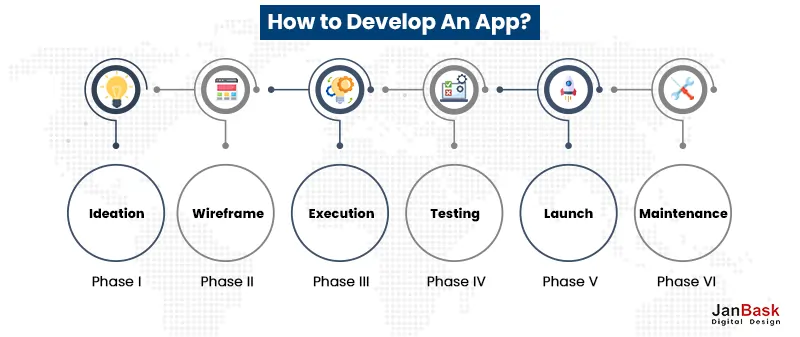
How to develop an app is a complex process that involves several phases of planning, design, execution, testing, and launch. Developing a mobile app can be an exciting yet complex process that involves several stages. From ideation to launch and beyond, each phase requires careful planning and execution to ensure a successful outcome.
In this section, we will break down the app development process into six phases and outline the requirements for each. Whether you're developing an app for business or personal use, this step-by-step guide will help you navigate the process and create a successful mobile app.
Interested in our Mobile App Development Services

The ideation phase is the first step in the app development process. It involves brainstorming and developing the initial concept for your app. This phase is critical for the success of your app as it sets the foundation for the rest of the development process. In this phase, you will determine the purpose of your app, identify your target audience, and consider the app's unique features and functionality. Let us explore the ideation phase in detail and outline the requirements for this critical stage of the app development process.
Once you have a clear idea of the app's purpose, audience, and features, the next step is to create a wireframe. A wireframe is a visual representation of the app's layout and functionality. It helps to define the user interface, user experience, and navigation of the app. Here are some requirements to consider in this phase:
Design is a crucial aspect of any successful mobile app, and our mobile app design guide offers valuable insights and best practices to help you create an exceptional user experience. Don't miss out on this must-read resource!
The execution phase involves turning your wireframe design into a functioning app. Here are some requirements to consider in this phase:
The testing phase involves ensuring that your app is stable, secure, and functioning as intended. Here are some requirements to consider in this phase:
The launch phase is where you introduce your app to the world. Here are some requirements to consider in this phase:
Once your app is launched, it's important to continue maintaining it to ensure it runs smoothly and remains relevant to your users. Here are some requirements to consider in the maintenance phase:
The best way to create an app is by following a step-by-step process that includes ideation, wireframing, development, testing, and launch. By considering these requirements, you can ensure that your app remains relevant, reliable, and user-friendly, which is crucial for long-term success.
A good mobile app is one that is easy to use, functional, visually appealing, and adds value to the user's life. In other words, it should be intuitive, user-friendly, and solve a problem or fulfill a need.
Let's dive deeper into each of these factors:
You can hire a reputable mobile app development company to create a mobile application. JanBask specializes in providing high-quality mobile app development services to businesses of all sizes.
Here are some examples of mobile apps that excel in these areas:
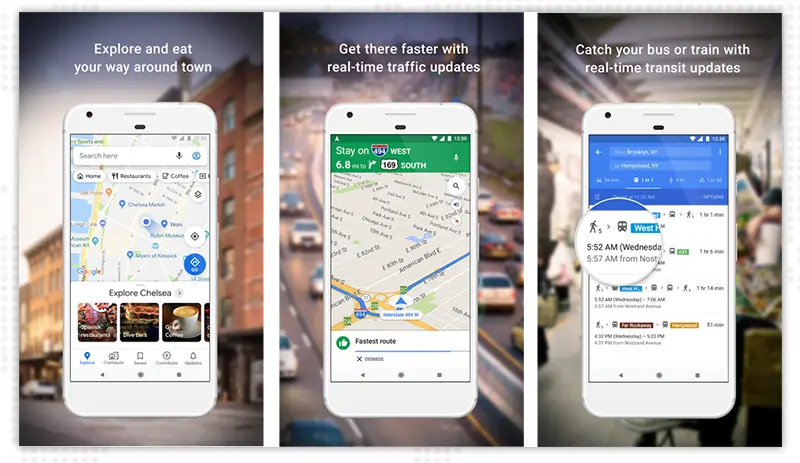
Google Maps is a prime example of a mobile app that is both functional and easy to use. It provides accurate directions, and real-time traffic updates, and even allows users to view 3D images of their destination. The app is constantly updated to improve its features and usability.

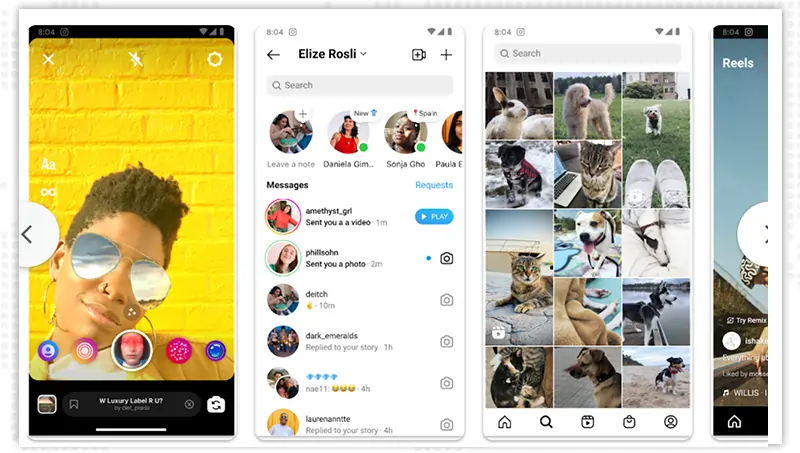
Instagram is an app that has been able to stay popular for many years due to its visually appealing design and features. Users can easily share photos and videos with their friends and followers, and the app includes a range of filters and editing tools to enhance the visual content.
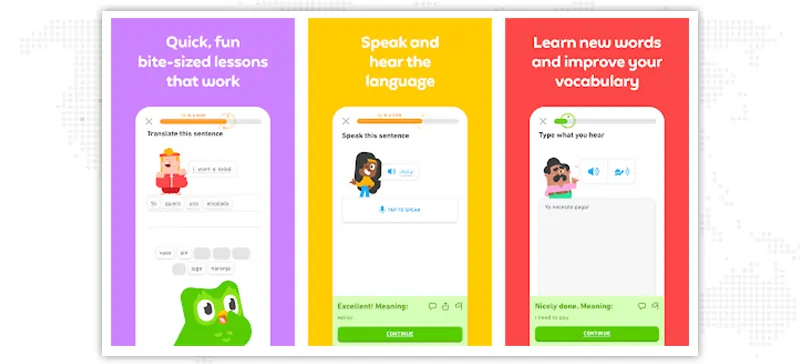
Duolingo is a language-learning app that is both effective and fun. The app uses a game-like interface to teach users a new language, with lessons that gradually increase in difficulty. Users can track their progress and earn rewards for completing lessons, making the learning experience enjoyable and motivating.
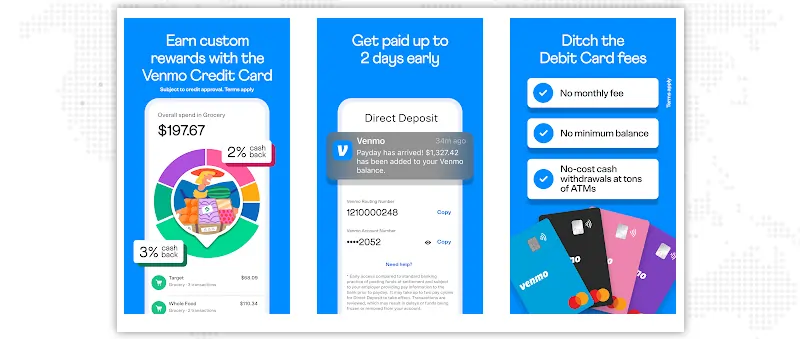
Venmo is a mobile payment app that has become increasingly popular for its convenience and security. Users can easily transfer money to friends and family, and the app includes features such as payment reminders and splitting bills with multiple users.
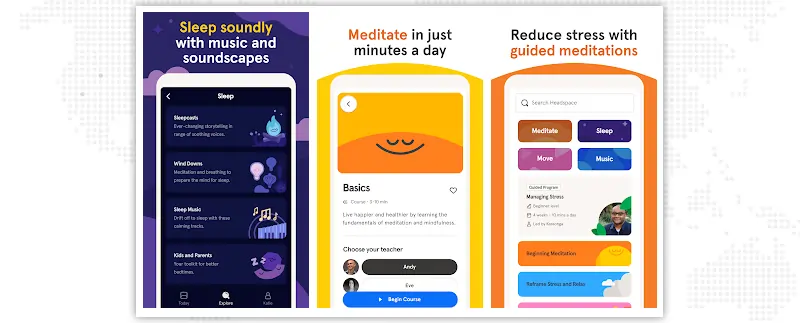
Headspace is a meditation app that offers guided meditations and mindfulness exercises to help users reduce stress and improve their mental health. The app's simple interface and daily reminders make it easy for users to incorporate meditation into their daily routines.
There are several main app development methods, each with its benefits and drawbacks. Here are the three most popular app development methods:
One of the main app development methods is hiring an app development agency to develop your app. Hiring an agency has several benefits, including:
Expertise: App development agencies have experience in building mobile apps, and they have a team of experts who specialize in different aspects of app development. They are knowledgeable about the latest trends and technologies, ensuring that your app is built with the latest tools and techniques.
Time-saving: Developing an app requires a significant amount of time and effort, from designing the UI/UX to developing the app's features and testing. Hiring an agency can save you time because they have a dedicated team that can work on your project full-time. This means that your app can be developed and launched faster than if you were to do it yourself.
Quality: App development agencies have a reputation to maintain, so they strive to deliver high-quality apps that meet the client's requirements. They have access to the latest tools and technologies, which ensures that your app is built to the highest standards.
Support: App development agencies provide ongoing support after the app is launched, ensuring that any issues are addressed promptly. They can also provide maintenance services to keep your app up-to-date with the latest updates and features.
The best way to develop apps is to follow a structured process that involves ideation, wireframing, execution, testing, launch, and maintenance. There are numerous app development companies out there, but finding the right one for your project can be a challenge.
Hire an app development agency that uses effective ways to develop a high-quality mobile app. They offer expertise, time-saving, quality, and ongoing support. However, while hiring an app development company you should communicate your project requirements clearly and effectively to ensure that the agency delivers an app that meets your expectations.
Another app development method is using an app builder, which is a software tool that allows you to create mobile apps without coding. Using an app builder has several advantages, including:
Easy to use: App builders are designed to be user-friendly, and they require little or no coding experience. This means that anyone can use an app builder to create a mobile app, regardless of their technical skills.
Time-saving: App builders can help you develop your app faster because they provide pre-built templates and features that you can customize to your liking. This eliminates the need to build everything from scratch, which can be time-consuming.
Cost-effective: App builders are usually more cost-effective than hiring an app development agency or building an app from scratch. Some app builders offer free plans or trial periods, allowing you to test their features before committing to a paid plan.
However, there are also some challenges to using an app builder:
Limited customization: App builders provide pre-built templates and features, which can limit your ability to customize your app to your liking. This can make your app look similar to other apps that use the same templates, making it difficult to stand out in the app store.
Limited functionality: App builders are limited in terms of functionality compared to building an app from scratch. This means that you may not be able to include all the features you want in your app.
Integration issues: App builders may not integrate well with other software or systems, making it difficult to connect your app with other services or databases.
Using an app builder is a cost-effective and easy-to-use app development method, especially for simple apps. However, it may limit customization and functionality, and integration issues may arise. It's important to carefully evaluate your project requirements and choose an app builder that meets your needs. If you require more functionality, customization, or integration capabilities, it may be best to consider other app development methods such as hiring an agency or building an app from scratch.
Understanding how to make mobile apps involves exploring different development methods, such as using app builders or coding the app yourself. If you're struggling to choose the right mobile app development company for your project, check out our latest blog post for expert tips to choose a mobile app development company.
One of the most traditional and popular app development methods is coding the app yourself. Knowing how to make a mobile app involves understanding the latest technologies, coding languages, and industry trends to create a seamless user experience. This involves writing the code from scratch to develop the app, and it requires significant technical expertise in programming languages such as Java, Kotlin, Swift, or React Native.
Coding the app yourself has several advantages, including:
Full control: When you code the app yourself, you have full control over every aspect of the development process, including the user interface, functionality, and performance.
Customization: Coding the app yourself allows you to fully customize the app to your liking. You can add any features or functionality you want, and you can ensure that your app has a unique look and feel.
Scalability: Coding the app yourself allows you to create an app that is scalable and can grow as your business or user base grows.
However, there are also some challenges to coding the app yourself:
Time-consuming: Coding an app from scratch can be time-consuming, especially if you don't have experience in programming or app development.
Technical expertise: Developing an app yourself requires significant technical expertise in programming languages and app development frameworks. It can be challenging if you don't have experience in these areas.
High cost: Developing an app yourself can be expensive if you need to hire developers or purchase software tools.
Maintenance and updates: Once the app is launched, it requires maintenance and updates to fix bugs and add new features. This requires ongoing development and maintenance efforts.
Coding the app yourself provides full control and customization, and it allows for scalability. However, it requires technical expertise, can be time-consuming, and may be costly. It's important to carefully evaluate your project requirements and resources before choosing this method of app development.
If you don't have the technical expertise or resources to develop an app yourself, it may be best to consider other app development methods such as hiring an agency or using an app builder. With so many mobile app development companies to choose from, it's important to do your research and select a partner that aligns with your needs. Learning how to create a mobile app can be a complex process, but it can be broken down into manageable steps with the right guidance and resources.
At JanBask, we can help you develop your app with our team of experienced app developers, designers, and content creators. We understand that design and content are essential aspects of app development, and we ensure that your app's design and content are top-notch.
Our team of designers will work with you to create a unique and visually appealing design that aligns with your brand identity and provides a seamless user experience. We will design a layout, choose a color scheme, select fonts, and create icons and images that are tailored to your app's purpose and target audience. We will also ensure that the design is adaptable to different screen sizes and devices, making your app look great on all platforms.
Knowing how to make a successful app involves identifying user pain points, leveraging user feedback, and constantly iterating to improve the product. Our team of content creators will work with you to create content that is engaging, relevant, and optimized for search engines. We will consider the purpose of your app and what message you want to convey to your users. We will organize the content in a way that makes it easy to navigate and understand. Whether you need educational content, gaming content, or social media content, we have the expertise to create compelling and high-quality content that resonates with your audience.
Our team can assist you in adding features such as social media integration, push notifications, payment gateways, and more, to ensure that your app is a complete solution for your users. We can also help you incorporate features that are specific to your business requirements, such as customer loyalty programs or appointment booking systems.
Our team of experienced developers can help you create custom plugins that are tailored to your app's requirements. These plugins can be used to enhance your app's performance, add new features, or integrate with third-party services. Our developers use the latest tools and technologies to create robust and scalable custom plugins that can help you differentiate your app from the competition.
We have experience working with a wide range of platforms and frameworks, and we can help you select the right technology stack for your app development needs. Our developers are proficient in using popular platforms such as Android, iOS, and hybrid app development frameworks such as React Native and Flutter.
Are you trying to decide between Android and iOS mobile app development? Our latest blog post breaks down the pros and cons of Android vs iOS mobile app development to help you make an informed decision.
Our team of experienced developers can help you integrate APIs from popular services such as Google Maps, social media platforms, payment gateways, and more, to provide your users with a seamless experience. We can also assist you in creating custom APIs that are specific to your business requirements.
Our developers have experience working with a wide range of API technologies such as REST, SOAP, and GraphQL, and we can help you select the right technology stack for your app development needs. We ensure that your app's API integration is seamless, secure, and optimized for performance, providing your users with the best experience possible.
In addition, our team can assist you in other aspects of app development, such as design, content creation, custom plugins, testing, and deployment. We ensure that your app meets your requirements, is scalable, and is optimized for performance and user experience.
Creating a successful mobile application requires a lot of effort and planning. It's not just about having a great idea, but also about executing that idea in the right way to deliver value to users. The key to success lies in identifying the target audience, understanding their needs and preferences, and delivering a user experience that meets their expectations.
To design a successful mobile application, it's important to choose the right app development method that suits your budget, timeframe, and business requirements. Whether you choose to hire an agency, use an app builder, or code the app yourself, it's essential to focus on delivering a high-quality product that meets the needs of your users.
In addition, investing in design, content, add-ons, and API access can help you differentiate your app from the competition and deliver a superior user experience. It's important to focus on building a reliable, secure, and scalable app that can handle user traffic and data without any issues.
Additionally, it's important to continuously test and refine your app to ensure that it meets the changing needs of your users and adapts to new technologies and trends. By constantly monitoring user feedback, analyzing app usage data, and making iterative improvements, you can create a successful mobile application that delivers long-term value to your business.
In short, creating a successful mobile application is not an easy task, but with the right approach and a team of experts, you can create an app that meets the needs of your users and drives business growth.
As a leading app development company, we pride ourselves on delivering exceptional results for our clients. Our mobile app development service includes everything from initial concept design to final product launch and ongoing support. Our team of developers, designers, and project managers can help you with all aspects of app development, from ideation and prototyping to deployment and maintenance. With JanBask, you can ensure that your app is of high quality, meets your business requirements, and delivers a great user experience.
Interested in our Mobile & Development Services?

1. What are the main app development methods?
The main app development methods are hiring an agency, using an app builder, or coding the app yourself. Each method has its advantages and disadvantages depending on the budget, timeframe, and business requirements.
2. What makes an app successful?
User engagement, functionality, and usability are some of the factors that make an app successful.
3. What are the key factors that make a successful mobile application?
The key factors that make a successful mobile application include a great user experience, reliability, security, scalability, and unique features that meet the needs of the target audience.
4. What are the best practices for designing a mobile application?
The best practices for designing a mobile application include keeping the design simple and intuitive, focusing on the user experience, optimizing for different device sizes and screen resolutions, and using consistent branding and visual elements throughout the app.
5. How can I ensure that my mobile application is secure?
You can ensure that your mobile application is secure by using encryption, following secure coding practices, implementing proper authentication and access controls, regularly testing for vulnerabilities, and keeping the app up-to-date with the latest security patches.
6. How can I monetize my mobile application?
You can monetize your mobile application through in-app purchases, advertising, paid subscriptions, or selling the app itself.
7. What are the benefits of using an app builder for mobile app development?
The benefits of using an app builder for mobile app development include faster development time, lower cost, ease of use, and pre-built templates and features.
8. What is the role of testing in mobile app development?
Testing is a critical part of mobile app development, as it helps ensure that the app meets the requirements, functions as intended, and delivers a great user experience. Testing can include unit testing, integration testing, functional testing, usability testing, and performance testing.
9. How can I measure the success of my mobile application?
You can measure the success of your mobile application by tracking key performance indicators (KPIs) such as user acquisition, user retention, engagement metrics, and revenue. It's important to regularly analyze data and user feedback to identify areas for improvement and make iterative changes to the app.
L
This blog was a great resource for understanding the different methods of app development!
C
I appreciated the detailed explanation of the design process and add-on options.
M
Thanks for outlining the benefits of using a development company like JanBask – very helpful!
H
I found the section on API access particularly insightful and informative.
P
Great job covering the key factors for creating a successful mobile app – I’ll be referencing this again in the future.
N
I appreciated the balanced approach in discussing the challenges of different app development methods.
B
Thanks for answering the FAQs – it helped clarify some of my questions about mobile app development.